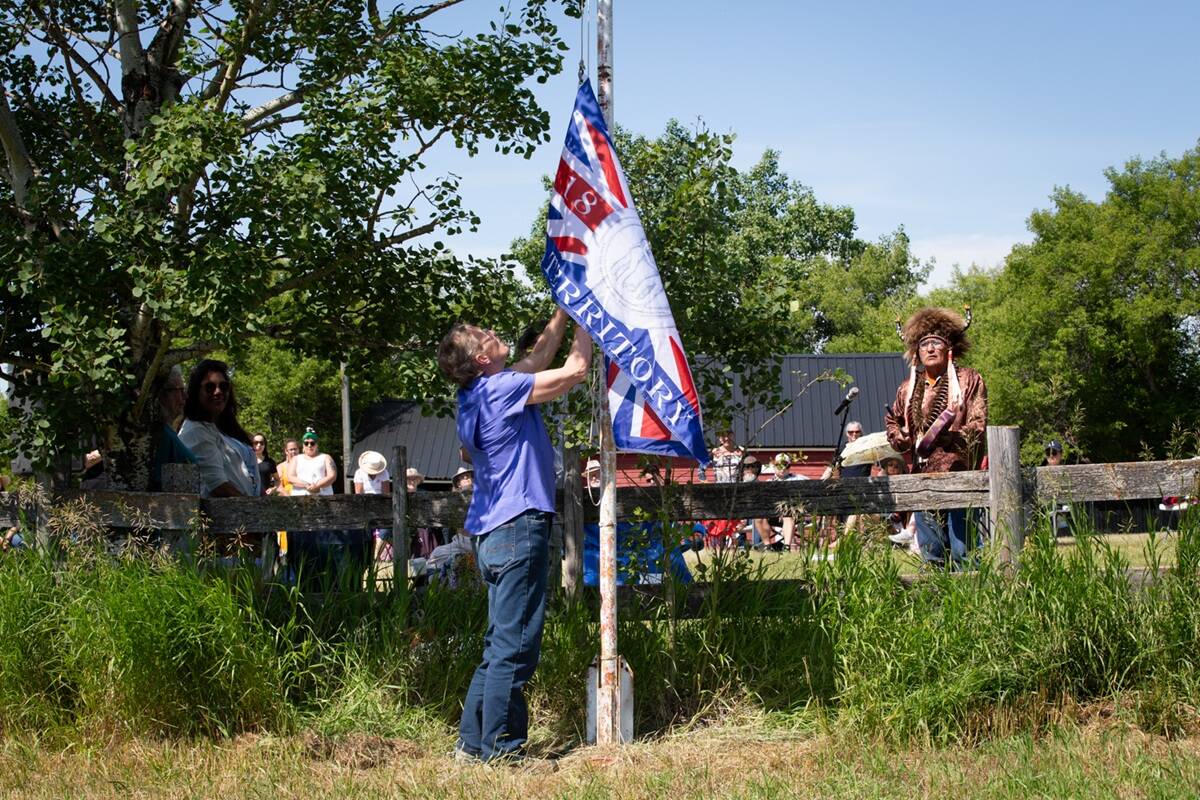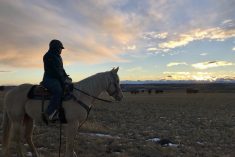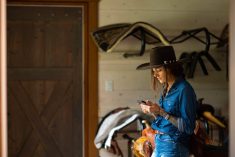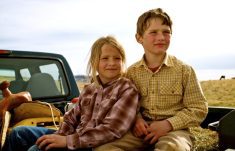Shifting a farm or ranch from one generation to the next is a popular topic at farm events, in the local coffee shop and even in country music ballads. While there are many ideas on how to work toward succession, it takes a willing attitude, some give and take, and a lot of communication.
Have the hard conversations
When Andrea Brocklebank was growing up on her family farm near High River, Alta., someday assuming the role of primary decision maker wasn’t on her radar. “I think I always knew I wanted the farm in my life, but didn’t have a clear path,” says Andrea.
Read Also

Treaty Land Sharing Network expands reach in Saskatchewan and Alberta
The Treaty Land Sharing Network, which connects land holders with First Nations and Metis people, has expanded since it began in 2018
Bart and Rosemary Brocklebank encouraged daughter Andrea and her sister to gain experience away from the farm after graduation. For Andrea, that meant pursuing agriculture studies and a master’s degree in agricultural economics. Her industry experience led her to work for the Canadian Cattlemen’s Association and the Beef Cattle Research Council, headquartered in Calgary.
When an opportunity came for Andrea, her husband Brad and their two young sons to move to High River, it prompted them to consider playing a bigger role on the farm.
“We had a wonderful conversation with my parents, saying we were interested in becoming part of the farm,” says Andrea, who remembers her dad’s smile when they broached the topic. While he didn’t want to force someone onto the farm, he had a notion of wanting to keep the farm legacy intact.
The next steps weren’t clear but having the idea out in the open was key. “Dad said, ‘We’ll figure this out.’”
People avoid the conversation, but pushing it off because it’s uncomfortable isn’t good enough, she says. “Difficult conversation is the only thing that is fair to start the process so the next generation has a future, too.”
Patti Durand is a business advisor in Humboldt, Sask., with Farm Credit Canada. She says that in past generations, farm transitions often didn’t take place until someone died, but as times, values and businesses have changed, the approach to transition needs to evolve.
“Transition is not something to avoid, it’s not something to be ashamed of. Let’s sit up and choose to make this a priority.
“The earlier you start, the more lanes you have to pick from. As time goes on, choices begin to be made for you,” Durand says.
Durand recognizes that open dialogue may be a challenge for some family members. “We’re asking people to be transparent when that typically is not where they came from. These are not skills that they may have at the table.”
If communication becomes a stumbling block, it may be a good idea to bring in a professional. “You can learn this — you might not need help forever but you might need help for the short term.”
Create a road map
When the Brocklebank family was undergoing their most recent transition, they had a history of planning for succession to build upon.
Andrea’s great-grandfather moved from Ontario to Alberta, buying and selling different places as he established the farm, which eventually was passed to her grandfather. Later, a corporation was set up when Bart became one of two farming sons who took over what was a mixed grain and cattle operation.
Andrea says her grandfather was progressive, allowing his sons to take on leadership and responsibilities. “The farm could grow and they looked to their dad as an advisor, but not a boss.”

In the mid-’90s, in recognition of two growing families, they divided the expanded farm. Andrea’s uncle focused on the grain side, while her parents’ portion centred around cow-calf. They relocated to a new farm site, building pens and barns from the ground up.
The farm continued to evolve and today, they run yearlings. “We grass between 450 and 500 yearlings, buy them in March, put them on feed at a local feedlot and turn them out June 1,” Andrea says.
The Brocklebanks didn’t have to go far to find experienced professional advice to help them navigate the transition. They worked with their accountant and found a lawyer and transition specialist right in their local community. Andrea also leaned on some key contacts in her personal network to gain insight.
“It’s hard to ask for help but every time I do it’s amazing.” Their team helped guide them through structuring personal and farm assets and also helped them identify goals and expectations.
“I wasn’t prepared to invest in the farm without some notion of how this might land,” says Andrea.
The family developed a shareholder agreement that everyone had to sign. “It lays out all of these things, what you want, how to protect your farm,” she says. “It’s a playbook for how things move forward.”
With a non-farming sibling involved, the family adhered to the principle that what is fair is not necessarily what is equal. “My sister was very respectful of wanting to keep the farm intact, too.”
Everyone agreed that a payout of current shares over time would work, with a “bad year clause” factored in. Andrea explains that while they are intentional in paying out the shares on schedule, if working capital declines by a specified amount, the clause allows an option to pause payments for a year.
We thought we’d have more time
Structuring a business to withstand transition is one piece of the puzzle. However, the shift in daily roles and decision-making is important as well.
Everyone agreed a gradual adjustment, particularly in the early stages, would work best. At that time, Bart and Rosemary were running yearlings with a business partner and they wanted to honour that arrangement. In Andrea and Brad’s case, both were working full-time while raising two young sons and they needed to be mindful of the added responsibility.
The Brocklebanks had a five-year plan. However, Bart passed away unexpectedly in a farm accident just two years into the plan.
While they were shocked and saddened, the family’s diligent planning gave everyone some clarity and comfort. “I was allowed to grieve, we knew where the farm stood, there were no questions or uncertainty and no need to suddenly change the direction of the farm.”
Despite the short time frame, Bart had given the younger generation a chance to take on leadership and problem-solve. “What I will say I appreciate about Dad, over the last few years, he gave up a lot of rope in terms of what cattle we want to buy and if we thought we should switch something over.
“He’d have a say but let us bumble through it and then provide his perspective,” she says. “I’m grateful he gave us that window of fumbling where he was still around.”
Drought has been another challenge. “The first year was okay. Our second year was not bad but not great,” says Andrea. Last year, they decided to pull yearlings off early. “Our books have not appreciated that, but our grass has improved.”

As they are staring down another potential season of drought, Brocklebank feels concerned but is keeping an eye on the long term. “I’ve had to be compassionate and get some perspective that my dad would have provided.
“My dad would tell me to slow down and figure out what tools I have,” she says. “He’d tell me to just trust ourselves and trust the people around us.”
Transition takeaways
It can be hard to know where to begin when planning for the future. Patti Durand says a net worth statement is a good starting point. “Do you have a clear and detailed net worth statement? What is owned, who is on title, what do we owe? Management and financing are not always obvious.”
Durand acknowledges that cattle operations have a different set of demands than other farms, which can make it challenging for beef producers to set aside the time necessary to put the work into a transition plan. “There is a different type of urgency and this is why getting support and advice and other people to work on it with you can be really important.”
Durand also notes that people may feel isolated during the process, but the transition is a universal challenge. “People think that they are so alone and their family is out of the ordinary,” Durand says. “Every farm is unique and there is a unique combo of what will be the solution.”
The Brocklebank family’s transition was relatively smooth, yet there were things Andrea would do differently. “The biggest thing I wish we had done was add myself as a contact to all the forms and at the bank.” With her dad gone, she learned that updating herself to be the main contact was tedious and time-consuming, especially when deadlines were looming.
If she could do anything to honour her father’s legacy Andrea says it would be to encourage people to start talking about transition.
“Be more open about succession planning,” she says. “Our story is the ideal story, it is the exception to the rule.” She adds that there is too much at stake to delay the process.
Preparing for the inevitable is hard. However, the effort the Brocklebank family invested into planning their transition was invaluable, particularly when the unexpected happened.
“Hopefully it can inspire others.”
– Tara Mulhern Davidson is a writer and a beef and forage consultant. She ranches with her family in southwestern Saskatchewan.















